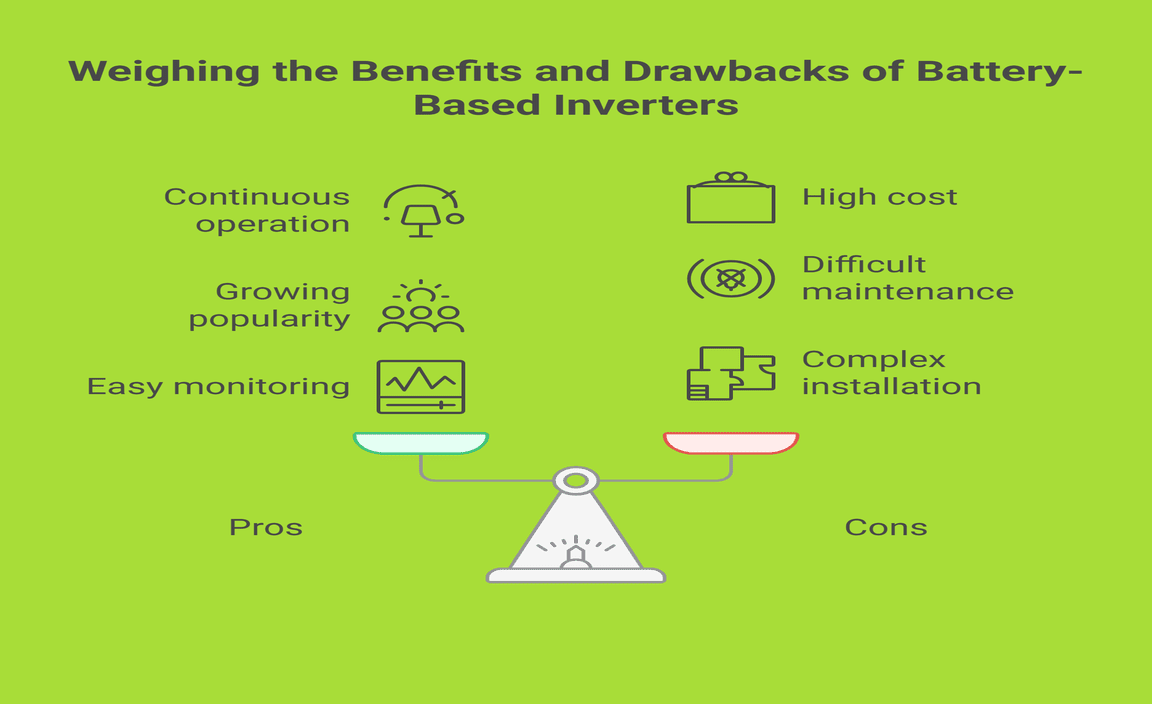Pipe adapters for exhaust help connect different sized exhaust pipes smoothly. They are crucial for custom exhaust systems, repairs, or adding accessories, ensuring a leak-free and efficient fit. This guide simplifies choosing and installing them.
Ever found yourself needing to connect two exhaust pipes, only to discover they’re different sizes? It’s a common hiccup, especially when you’re working on a car’s exhaust system or trying to fit a new part. A mismatch can lead to annoying leaks, reduced performance, and even a noisy ride. The good news? There’s a simple solution: pipe adapters for exhaust. Think of them as the unsung heroes that bridge these size gaps, making custom setups or repairs much easier. We’ll walk you through what these adapters are, why you might need them, and how to pick out the right one for your needs, all in plain language. Let’s get your exhaust system back in tune!
What Exactly Are Pipe Adapters for Exhaust?
At their heart, pipe adapters for exhaust are fittings designed to connect two pipes of different diameters or shapes. You can think of them like a universal connector for your car’s exhaust line. They solve the common problem of incompatibility, allowing you to smoothly transition from one pipe size to another. This is super handy whether you’re building a custom exhaust system, replacing a damaged section, or adding a new muffler or catalytic converter. They ensure a secure, leak-proof seal, which is vital for your car’s performance and emissions control.
These adapters are typically made from durable materials that can withstand the high heat and corrosive gases produced by your engine’s exhaust. Common materials include stainless steel and aluminized steel. Stainless steel is usually the top choice for its superior corrosion resistance and longevity, especially in harsh environments.
Why You Might Need an Exhaust Pipe Adapter
There are several common scenarios where an exhaust pipe adapter becomes your best friend:
- Custom Exhaust Systems: When you decide to go for a custom exhaust, you might mix and match components from different brands or for different vehicle models. Adapters are essential for making these disparate parts fit together seamlessly.
- Replacing or Upgrading Parts: If you’re replacing a muffler, catalytic converter, or exhaust pipe section, the new part might have a different diameter than the old one. An adapter bridges this size difference.
- Repair Work: Sometimes, a section of your exhaust pipe might be damaged, and the easiest repair is to cut out the damaged part and insert a new piece. If the new piece isn’t the exact same size, an adapter is needed.
- Repairing Leaks: A small leak can often be fixed by replacing a short section of pipe. If the replacement pipe doesn’t perfectly match the existing diameter, an adapter will seal the connection.
- Universal Components: Many aftermarket performance parts, like mufflers or resonators, are designed as “universal” fitments. This means they often come with a standard inlet/outlet size and require adapters to connect to your specific vehicle’s exhaust piping.
Without the right adapter, you’d be facing the daunting task of trying to modify pipes (which is difficult, especially when they’re thin and oddly shaped), or you might end up with a leaky, inefficient, and noisy exhaust system. Adapters offer a straightforward and reliable solution.
Types of Exhaust Pipe Adapters
When you start looking for exhaust pipe adapters, you’ll notice a few common types. Understanding these will help you choose the right one easily.
1. Reducer Adapters
These are the most common type. As the name suggests, they reduce the diameter of the exhaust pipe. You’ll often see them described as “reducer couplings” or “muffler reducers.”
- Purpose: To connect a larger pipe to a smaller pipe.
- Common Uses: Attaching a universal muffler (often with a larger inlet) to a vehicle’s existing smaller exhaust pipe, or connecting exhaust manifold piping to a smaller diameter exhaust system.
- Types: Can be straight reducers (conical shape) or offset reducers.
2. Expander Adapters
These do the opposite of reducers. They expand a smaller pipe to fit into a larger one.
- Purpose: To connect a smaller pipe to a larger pipe.
- Common Uses: Sometimes needed when replacing a section of exhaust piping that has been corroded or damaged and replaced with a larger diameter piece.
3. Straight Couplers
These adapters connect two pipes of the same diameter. While not strictly for different sizes, they are often grouped with adapters because they serve a similar joining function and are used in exhaust system modifications and repairs.
- Purpose: To join two pipes of the same diameter, often to extend a pipe or repair a section.
- Common Uses: Extending an existing exhaust pipe, or joining two straight pipe sections together.
4. Y-Pipe Adapters (Splitters)
These are a bit more complex. A Y-pipe adapter splits a single pipe into two, or combines two pipes into a single outlet.
- Purpose: To change the flow path of exhaust gasses.
- Common Uses: Creating dual exhaust systems from a single outlet, or merging exhaust from two catalytic converters into a single muffler.
5. Transition Adapters
These can handle more than just a simple size change; they might also connect pipes of different shapes (e.g., round to oval), though most common exhaust adapters are round-to-round.
How They Fit Together
Most adapters are designed to slip over or into the pipes they connect. Some might have a flange or a specific connection type like V-band or clamp-on.
- Slip-Fit: One pipe slides over the end of another, or one pipe slides into the end of another. This is common for reducers and expanders.
- Flanged: These adapters have a flat rim (flange) with bolt holes on one or both ends, designed to be bolted to a matching flange on the exhaust pipe. This provides a very secure and often leak-proof connection, especially when paired with a gasket.
- Clamp-On: These adapters usually slip over the pipes and are then secured tightly with a special exhaust clamp. This is a popular method for its ease of installation and removability.
Choosing the Right Exhaust Pipe Adapter: Key Factors
Picking the correct adapter might seem straightforward, but a few details can make all the difference for a secure and lasting fit. Here’s what to consider:
1. Pipe Diameters
This is the most crucial factor. You need to know the exact outer diameter (OD) of the pipe you are connecting to and the exact inner diameter (ID) of the pipe the adapter needs to connect with. Exhaust pipes are measured by their OD, and adapter specifications usually list the sizes they fit.
- Example: If you have a 2.5-inch exhaust pipe and need to connect it to a 3-inch muffler inlet, you might look for a 2.5-inch to 3-inch reducer. Ensure the adapter’s specs match these dimensions.
Pro Tip: Always measure your pipes! Don’t just guess based on what you think the size should be. Use a tape measure or a caliper if possible. For exhaust pipes, the measurement is usually the outside diameter. For the adapter, be sure if it’s meant to slip over (connecting to the OD) or into (connecting to the ID) the existing pipe.
2. Material and Durability
Exhaust systems get hot and are exposed to moisture, road salt, and vibrations. Your adapter needs to be tough.
- Stainless Steel: Highly recommended for its excellent resistance to rust and corrosion. It’s more expensive but lasts much longer, especially in areas with harsh weather conditions. Look for grades like 304 stainless for best results.
- Aluminized Steel: A more budget-friendly option. It has a coating of aluminum that offers good corrosion resistance, but it’s not as durable as stainless steel and will eventually rust through, especially if the coating gets scratched.
- Mild Steel: Least expensive but will rust quickly. Generally not recommended for exhaust applications unless it’s a temporary fix or in a very dry climate.
3. Connection Type
How will the adapter connect to your existing exhaust pipes? This affects ease of installation and the seal quality.
- Slip-Fit: Easy to install, often secured with exhaust clamps. Good for most repairs and modifications.
- Flanged: Provides a very strong, leak-proof connection. Requires matching flanges and often a gasket. More common on factory systems or high-end aftermarket setups.
- Clamp-On: Utilizes specialized heavy-duty clamps. Offers a good seal and is relatively easy to install and remove.
4. Shape and Configuration
Most adapters are round, but be aware of the shape of your pipes.
- Round: The most common.
- Oval/Other Shapes: Less common for adapters, but if your exhaust pipe isn’t round, you’ll need a specialized adapter.
5. Bend vs. Straight
Does the adapter need to accommodate a bend in the exhaust pipe? Most adapters are straight, but you can find some that have a slight angle or curve to help with alignment.
6. Manufacturer and Vehicle Specificity
While many adapters are universal, some are designed for specific makes, models, or exhaust system components. If you’re working with a particular brand of muffler or exhaust kit, check if they offer specific adapter pieces or recommendations.
Tools You’ll Likely Need
Having the right tools makes the job much smoother and safer. For most exhaust adapter installations, you’ll need:
- Safety First! Always wear safety glasses and gloves. Exhaust components can be sharp and dirty.
- Socket Set and Wrenches: For removing exhaust clamp bolts or flange bolts.
- Penetrating Oil: Essential for loosening rusted exhaust bolts and clamps. Spray it on heavily and let it soak for a while.
- Screwdriver Set: For some clamp types.
- Hacksaw or Reciprocating Saw (Sawzall): If you need to cut the existing exhaust pipe to make way for the adapter.
- Exhaust Clamps: You’ll need one or two heavy-duty U-bolt or band-style exhaust clamps to secure slip-fit adapters.
- Measuring Tape or Calipers: To confirm pipe diameters.
- Wire Brush: To clean the ends of the pipes where the adapter will connect, ensuring a good seal.
- Optional: Exhaust Repair Paste/Putty: For sealing minor gaps or reinforcing a connection along with a clamp.
Step-by-Step Installation Guide (for Slip-Fit Adapters)
This guide focuses on the most common type: slip-fit reducers or expanders secured with clamps. Always follow specific instructions for your adapter and vehicle.
Step 1: Prepare the Vehicle
Ensure the vehicle is parked on a level surface. Engage the parking brake. If you need to work underneath, use sturdy jack stands to safely elevate the vehicle. Never rely solely on a jack. Allow the exhaust system to cool down completely before starting.
Step 2: Locate the Connection Point
Identify the section of the exhaust pipe where you need to install the adapter. This might be where you’re removing an old part or cutting a section to mend.
Step 3: Remove Old Components (If Necessary)
If you’re replacing an old muffler or pipe section, loosen and remove the clamps or bolts holding it in place. If the pipe is rusted and stuck, apply penetrating oil generously. You might need to cut through rusted clamps or sections of pipe if they won’t budge.
Step 4: Prepare the Pipes
Clean the ends of both pipes that will connect to the adapter. Use a wire brush to remove any rust, dirt, or old gasket material. This is critical for a tight seal.
If you are cutting the pipe to fit an adapter, make a clean, straight cut. Ensure the cut end is smooth and free of burrs.
Step 5: Test Fit the Adapter
Slip the adapter onto one of the pipes. Then, slide the other pipe into the other end of the adapter. Check that it fits snugly and that the adapter is the correct size and orientation for your needs. Make sure there’s enough overlap on both sides for the clamp to grip securely. If it’s too tight, you might need to slightly enlarge the end of the pipe (carefully, as this can weaken it) or the adapter opening if possible. If it’s too loose, it’s the wrong adapter.
Step 6: Position the Adapter
Once you’re satisfied with the fit, slide the adapter into its final position. Ensure it’s centered over the joint between the two pipes.
Step 7: Secure with Clamps
Place a heavy-duty exhaust clamp over the overlapping area where the adapter meets one of the pipes. Position the clamp so it bridges the adapter and the pipe. Tighten the clamp evenly using a socket wrench. Repeat this for the other side of the adapter, connecting it to the second pipe. Ensure both clamps are very tight – they need to create a seal that can withstand exhaust pressure and vibration. Don’t overtighten to the point of crushing the pipe, but make it as snug as you can.
Step 8: Check for Leaks
Start the engine and let it run. Listen carefully for any hissing or blowing sounds around the connection point. These indicate a leak. If you find one, try tightening the clamp further. If the leak persists, you may need to remove the clamp, reposition the adapter, or consider using exhaust paste/putty along with the clamp for a better seal.
Step 9: Final Inspection
Once you’re sure there are no leaks, lower the vehicle if it was raised. Double-check that all clamps are secure and that the exhaust system hangs correctly without any unusual stress.
Using Exhaust Repair Paste with Adapters
For an extra layer of security, especially if you have a slight gap or are concerned about sealing, exhaust repair paste or putty can be a great addition. These pastes are heat-resistant and designed to seal small holes and seams in exhaust systems.
How to Use It:
- After cleaning the pipe ends and test-fitting the adapter, but before tightening the clamps, apply a generous amount of the exhaust paste in the gap between the adapter and the pipes.
- Slide the adapter and pipes into their final position, ensuring the paste fills the seam.
- Tighten the exhaust clamps securely as described in Step 7. The clamp pressure will help force the paste into any tiny openings.
- Wipe away any excess paste before it hardens.
- Start the engine and let it run to cure the paste according to the product’s instructions.
This method provides a stronger, more reliable seal, making your repair more durable.
Maintenance and Longevity
Proper installation is key to the longevity of any exhaust adapter. Once installed, regular checks can help you catch problems early.
- Listen for Changes: Pay attention to your exhaust sound. Any new rattling, hissing, or excessive rumbling could indicate a loose clamp or a developing leak around the adapter.
- Visual Inspections: When you have a chance, look underneath your car. Check the adapter and clamps for signs of rust, damage, or soot indicating leaks.
- Address Rust Promptly: If you notice rust starting on an aluminized steel adapter or clamp, you might consider applying a high-temperature exhaust sealant or paint to slow its progression. However, severe rust means replacement is usually the best option.
- Tighten Clamps as Needed: Over time, vibrations can cause clamps to loosen slightly. A quick retightening can prevent leaks.
Choosing a stainless steel adapter is the best proactive step for long-term durability, especially if you live in an area prone to road salt or high humidity.
Common Problems and Troubleshooting
Even with the best intentions, sometimes things don’t go perfectly. Here are a few issues you might encounter and how to fix them.
Problem: Adapter is too loose or too tight.
Solution: Double-check your measurements. Is the adapter truly the correct size? Sometimes, pipe ends can be slightly deformed. Gently try to reshape the pipe end with pliers (if it’s thin metal) or use a pipe expander/reducer tool to get a better fit. If it’s significantly wrong, you’ll need to get the correct adapter size. For slip-fit adapters, ensure the overlap is sufficient for the clamp to engage effectively.
Problem: Leaks that won’t seal.
Solution:
- Ensure the pipe ends are clean and free of rust/debris.




